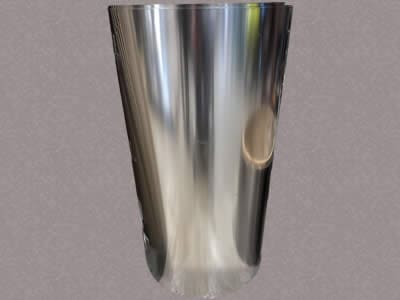Stainless Steel 321 (1.4541)


Stainless Steel 321 (1.4541)
Call 0121 544 5808 Today
Bespoke Manufacturing
Instant Quote Service
Worldwide Delivery
Various Gauges/Thicknesses
Bespoke Manufacturing
Instant Quote Service
Worldwide Delivery
Various Gauges/Thicknesses
What Is Stainless Steel 321 (1.4541)?
Stainless Steel 321, also known as AISI 321 or EN 1.4541, is a titanium-stabilised austenitic alloy comparable to 304, but specifically enhanced for welded or heat-intensive applications.
Key Properties
| Property | Description |
|---|---|
| Corrosion Resistance | Similar to 304, but improved resistance to intergranular corrosion after welding. |
| Heat Resistance | Performs reliably up to 870°C (1600°F) in oxidising atmospheres. |
| Mechanical Strength | Retains strength at elevated and cryogenic temperatures. |
| Weldability | Excellent – no post-weld heat treatment required. |
| Durability | Long service life under heat, pressure, and chemical exposure. |
Benefits of Stainless Steel 321
| Benefit | Description |
|---|---|
| High-Temperature Resistance | Reliable up to 870°C, maintaining mechanical integrity. |
| Titanium-Stabilised Structure | Prevents carbide precipitation and weld decay. |
| Excellent Strength & Ductility | Performs under pressure, vibration, and thermal cycling. |
| Chemical Resistance | Withstands oxidising acids and organic compounds. |
| Easy Fabrication & Welding | Suitable for complex shapes and welded assemblies. |
| Durability in Harsh Environments | Low maintenance, long service life, and minimal replacement cost. |
Applications of Stainless Steel 321
321 stainless steel is chosen for high-stress, high-temperature, and corrosive environments across multiple industries:
| Industry | Common Uses | Reason |
|---|---|---|
| Aerospace | Jet engine parts, exhaust manifolds, afterburner components | Oxidation and scaling resistance under heat |
| Chemical & Petrochemical | Heat exchangers, pressure vessels, piping | Stability under acidic or welded conditions |
| Automotive | Turbochargers, exhausts, bellows | Mechanical strength and oxidation control |
| Furnace & Thermal Systems | Linings, supports, burner parts | Withstands repeated heating to 870°C |
| Marine & Offshore | Piping, supports, fittings | Excellent corrosion resistance in brine-heavy environments |
| Pharma & Food | Sterilisation components, conveyors | Hygienic, non-reactive, and easy to clean |
| Gaskets & Shims | High-temp seals and flanges | Dimensional stability and corrosion protection |
Materials Used Across Industries
Stephens Gaskets works with a range of alloys to suit every engineering and environmental challenge:
| Material | Common Use | Feature |
|---|---|---|
| 304 / 1.4301 | General use | Cost-effective, good corrosion resistance |
| 316 / 1.4401 | Marine & chemical | Molybdenum for superior acid resistance |
| 321 / 1.4541 | Aerospace, exhausts | Titanium-stabilised for weld and heat resilience |
| 347 / 1.4550 | Petrochemical | Niobium-stabilised for aggressive environments |
| Inconel / Nickel Alloys | Extreme heat | Outstanding oxidation resistance |
| Graphite / PTFE | Gaskets | High-temp or chemical resistance |
Pain Points (and How We Solve Them)
| Buyer Concern | Stephens Gaskets’ Solution |
|---|---|
| Higher Cost vs 304 | Long-term savings through extended lifespan and fewer replacements. |
| Temperature Limit (≤ 870°C) | For >870°C, we recommend 310 or Inconel alternatives. |
| Weak in Reducing Acids | Suggest 316L or Hastelloy for highly acidic processes. |
| Work Hardening During Machining | We supply pre-cut gaskets, shims, and profiles to save tool time. |
| Limited Cold Formability | 304 preferred for deep draws – 321 excels in heat and weld stability. |
